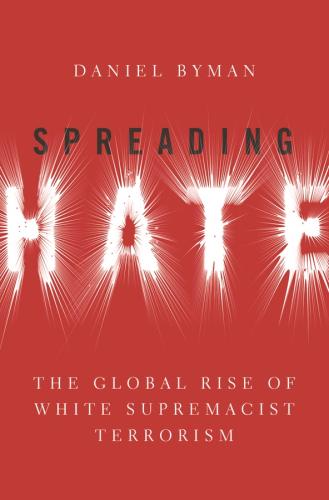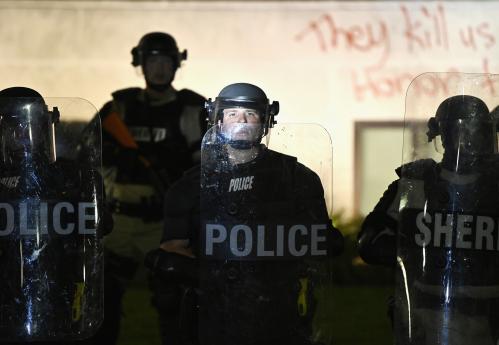On March 31, in honor of the launch of his new book, “Spreading Hate, the Global Rise of White Supremacist Terrorism”, Brookings Senior Fellow Daniel Byman discussed the evolution of the white supremacy movement’s tactics with Brookings Senior Fellow Rashawn Ray and Global Project Against Hate and Extremism Co-Founder Heidi Beirich. The Twitter Spaces panel was moderated by vice president and director of the Foreign Policy program, Suzanne Maloney.
 DANIEL L. BYMAN (@dbyman)
DANIEL L. BYMAN (@dbyman)
Senior Fellow, Center for Middle East Policy:
I began to look at this threat [white supremacy] seriously in 2011 after a man named Anders Breivik did a devastating terrorist attack in Norway. When the attack first occurred, my immediate instinct was that this is an al-Qaida or other jihadist attack, and it quickly became clear that this was a white supremacist. Breivik had a model that was unfortunately emulated by others. This idea of being a mass shooter, of putting up a manifesto that you try to spread [globally], and someone who really wasn’t part of a formal organization but was heavily networked and heavily engaged in a broader set of ideas that ricocheted around the world.
We began to see more and more attacks…and it became clear that the strengths and weaknesses of the violent white supremacists contrasted sharply with those of jihadists. Jihadists had very organized groups. You had the ability of these groups to have often a sanctuary in places like Afghanistan and Syria. You had the groups having an ability to train people and get them to a high degree of competence… This was in sharp contrast to the white supremacist danger, where this is something deeply rooted in American history but lacks overseas havens and strong groups.
 HEIDI BEIRICH (@heidibeirich)
HEIDI BEIRICH (@heidibeirich)
Chief Strategy Officer and Co-Founder, Global Project Against Hate and Extremism
There are fundamental ideas that drive most white supremacists, one of the most motivating is the idea that they are being literally replaced [by minority populations] in what they consider their own home countries, and that idea has motivated a lot of the terrorist incidents… [What is] really driving all of this is the fear of demographic change on the part of these [minority] groups… American history, European history, this idea that white people should rule, that white supremacy should be the way things are, and all of these [white supremacist] groups, because of this demographic change, feel that this is slipping away. That’s what they are responding to.
 RASHAWN RAY (@SociologistRay)
RASHAWN RAY (@SociologistRay)
Senior Fellow, Governance Studies
Based on January 6th, part of what we realized is the way that the various branches of government become complicit in what’s happening…This speaks to a lack of government direction. When we talk about law enforcement, this is one of the ways we see a big juxtaposition. We haven’t seen, in modern history at least, the blue wall of silence become fractured. We have video evidence of police officers being attacked. Of course, some of them and others ended up dying ultimately, and we can think about the ramifications of that, if all these police officers are being attacked by the people who supposedly want to uphold America. But, it became clear that they only wanted to uphold it for themselves.
What’s also important to note is that some police officers were being attacked [but others] were complicit in a very direct way. We saw all of the imagery, the symbolism that white supremacists play up. It became an opportunity for them to try to reclaim America… for what they think, what they believe it is intended to be, which is for individuals who look like them. January 6th became something where it was on full display, not just for people in the United States, but around the world to see…There are people at multiple levels who are complicit in the trickle down form of white supremacy and the normalization of these particular processes.
The Brookings Institution is committed to quality, independence, and impact.
We are supported by a diverse array of funders. In line with our values and policies, each Brookings publication represents the sole views of its author(s).











Commentary
Spreading hate: How the white supremacist movement continues to mutate in the digital age
May 19, 2022